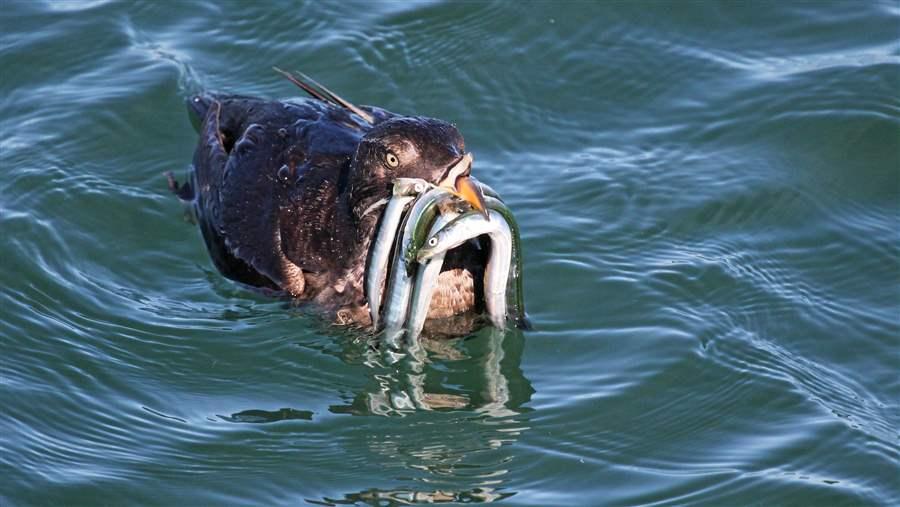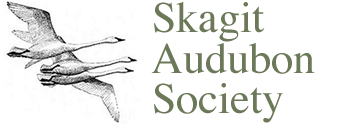 By Tim Manns
By Tim Manns
Adequately protecting birds, other wildlife, and their habitat requires the attention of individuals, organizations, and government at every level. For the sixty days ending March 10th the conservation focus of Audubon Washington’s state level staff and Washington’s 25 Audubon chapters was particularly on the legislature in Olympia. Washington’s part-time senators and representatives write a two-year state budget during a 105-day session. In the alternate years they hold a mere 60-day session. This alternate year, as every year, legislators introduced hundreds of bills on a myriad of subjects. Either from lack of support or simply lack of time in a very hurried 60 days, few bills passed. Time also went to enacting a supplementary budget and to passing the biennial transportation budget not finished in 2021.
For Audubon, the outcome of the 2022 legislative session was mixed. There was the very good news that Senate Bill (SB) 5042 passed after years of attempts. This closes a loophole in the Growth Management Act that gave developers and counties an easy way to undercut the basic goal of concentrating growth in more urban areas while preserving agricultural and other resource lands and habitat. Closing this loophole significantly helps in the struggle in Skagit County to prevent the sprawl and loss of farmland, forest, and habitat that would come with allowing misleadingly termed “Fully Contained Communities.”
Also on the plus side, a solar energy bill passed which Audubon vigorously supported. In the words of Audubon Washington’s Adam Maxwell: “House Bill (HB) 1814 … Creates a new incentive program to provide funding to support low-income solar installations on buildings, parking lots, existing impervious surfaces, and other locations that don’t displace habitat or prime farmland.”
Funding was also protected in the budget to map non-urban areas where solar and wind power could best be developed while minimizing adverse effects on farmland and birds. And funds were provided to staff the Department of Fish and Wildlife (DFW) to respond to a major influx of solar projects on the Columbia Plateau. This will help DFW ensure these projects are well-sited, protecting sagebrush birds such as the Sage Thrasher and Greater Sage-grouse.
Unhappily, the legislature did not enact HB 1099 to require Comprehensive Plans developed under the Growth Management Act to address the effects of climate change. This requirement would also have applied to Shoreline Master Programs (SMP). These programs are plans which the Shoreline Management Act requires counties and municipalities to adopt in cooperation with the Department of Ecology to protect certain river, lake, and marine shorelines. Skagit County is finally revising its three decades old SMP, but the draft not only weakens shoreline protections in several ways; it also fails to address sea level rise. Skagit Audubon joined several other conservation groups and many individuals critiquing the plan. A March 13th article in the Skagit Scoop blog summarizes the SMP draft’s problems: Skagit County Draft Shoreline Management Program Fails to Address Climate Change - Skagit Scoop.
 Why does this matter to Skagit Audubon? Ignoring climate change threatens human well-being and property; it threatens birds too. National Audubon research identifies climate change as the greatest among the many threats to birds. Poorly regulated shoreline armoring intended to protect buildings built too close to the water prevents beaches from receiving sand and gravel eroding from banks and bluffs. This changes the characteristics of beaches and renders them unsuitable for the spawning of sand lance and smelt. These small fish near the base of the marine food chain are essential in the diet of sea birds, salmon, and marine mammals, many of them in decline. In this context it should also be noted that a top Audubon legislative priority, SB 5885, failed under a barrage of opposition from people who would rather not have the state know they ignored regulations and installed hard armoring despite its detrimental effect on Puget Sound and its wildlife. This modest bill would simply have directed the state to inventory the extent of hard armoring to provide basic information needed to redress the damage already done.
Why does this matter to Skagit Audubon? Ignoring climate change threatens human well-being and property; it threatens birds too. National Audubon research identifies climate change as the greatest among the many threats to birds. Poorly regulated shoreline armoring intended to protect buildings built too close to the water prevents beaches from receiving sand and gravel eroding from banks and bluffs. This changes the characteristics of beaches and renders them unsuitable for the spawning of sand lance and smelt. These small fish near the base of the marine food chain are essential in the diet of sea birds, salmon, and marine mammals, many of them in decline. In this context it should also be noted that a top Audubon legislative priority, SB 5885, failed under a barrage of opposition from people who would rather not have the state know they ignored regulations and installed hard armoring despite its detrimental effect on Puget Sound and its wildlife. This modest bill would simply have directed the state to inventory the extent of hard armoring to provide basic information needed to redress the damage already done.
For quick summaries of bills Audubon Washington tracked and their fate, see Bill Tracker: 2022 Legislative Session | Audubon Washington and 2022 Legislative Session Recap for Climate, Puget Sound, Sagelands, and Bird-friendly Communities | Audubon Washington.
Other issues Skagit Audubon is following are described on the chapter’s website (www.skagitaudubon.org). At the drawdown menu beneath the Conservation tab, click on “Conservation Notes.” Please direct questions or comments to conservation@skagitaudubon.org.
Photo credit: Andrew Reding; Rhinoceros auklet with sand lance off the coast of Washington State; www.pewtrusts.org



